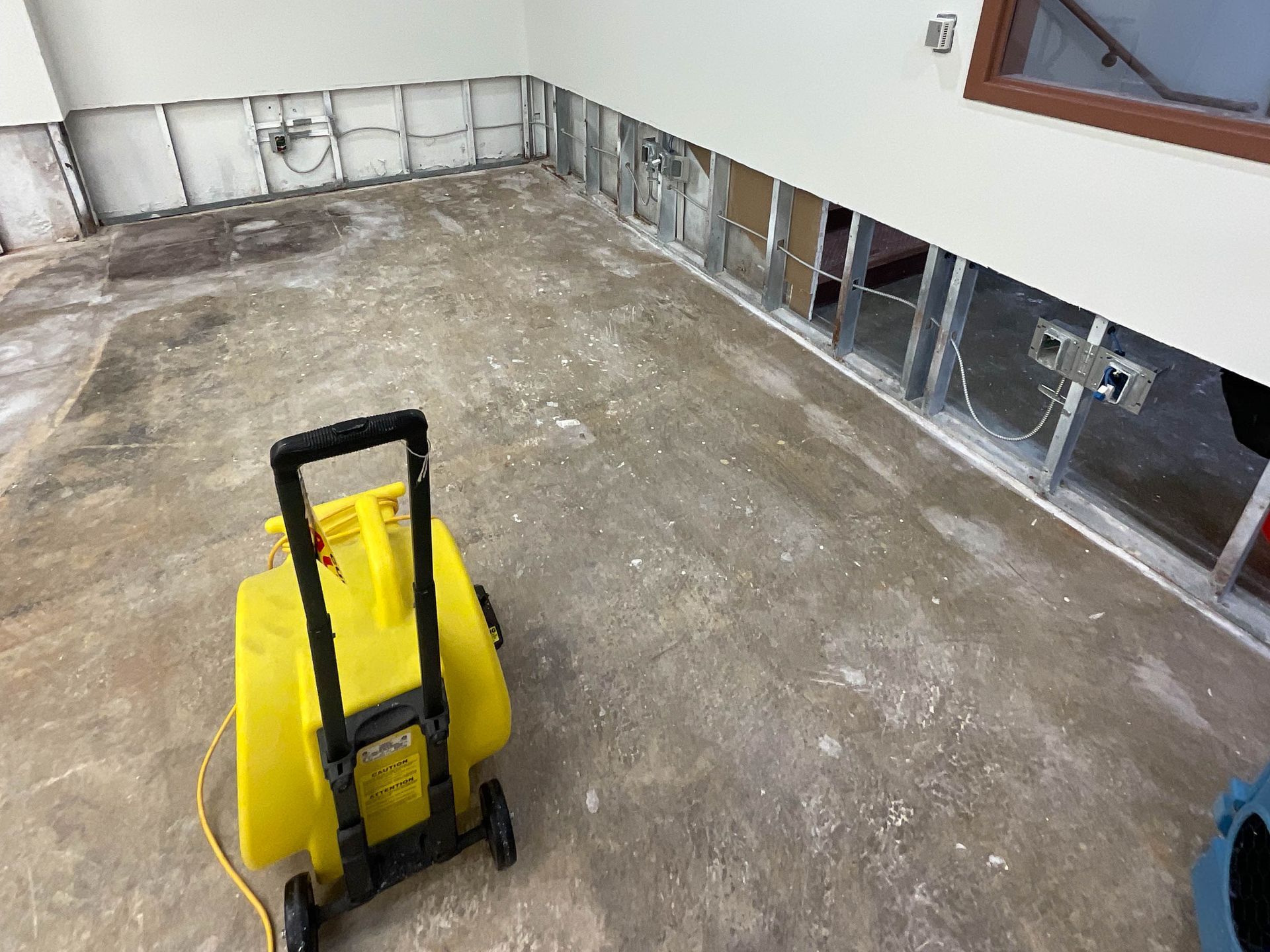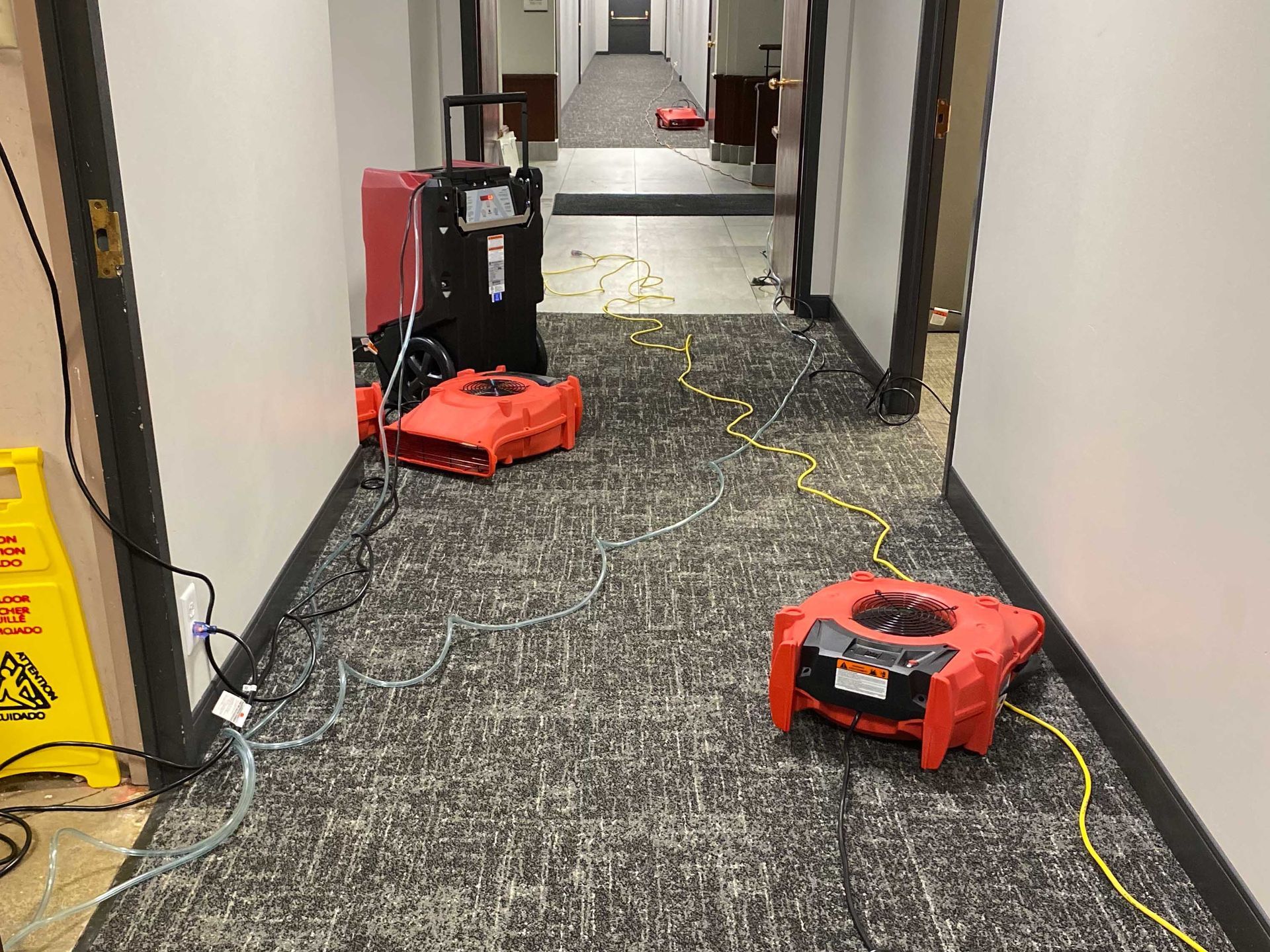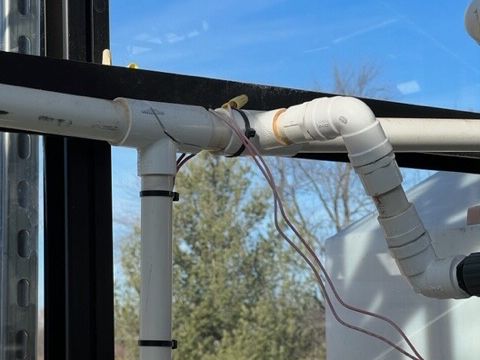Water Damage Restoration
Did a Pipe Burst and Send Water Everywhere?
Water damage from a burst pipe in a commercial or residential building can cause significant damage in several ways.
If the first floor is flooded, the water may damage or destroy flooring, carpets, and other floor coverings. Furniture, equipment, and inventory may also be damaged or destroyed.
Additionally, the water can cause structural damage to walls, ceilings, and other building components. In addition to the visible damage, water can also cause mold and mildew to grow, which can cause health problems and further damage to the building.
The building's electrical and HVAC systems may also be affected and need to be inspected, if not replaced. It is important to quickly address and repair the source of the water and then dry out the building and all affected materials as soon as possible to minimize the damage and prevent mold growth.
Get a free quote
Contact Us

The Science of Drying
The Science of Drying is a field of study that focuses on the principles and techniques used to dry wet materials and buildings following water damage.
The goal of the drying process is to remove as much moisture as possible from the affected materials and structures to prevent mold growth and further damage.
W H Y H2O Damage Pros?
What Steps To Follow In the Science of Drying Restoration Process
Click Through The List Below To Find Out!
Don't hire an amateur to do the job of a professional.
Hire a professional to help you navigate the damage restoration and insurance process.
You'll save money & gain peace of mind.


